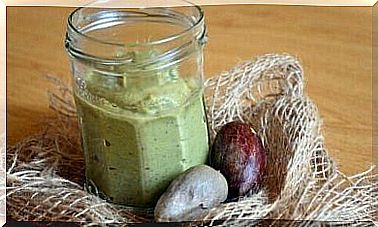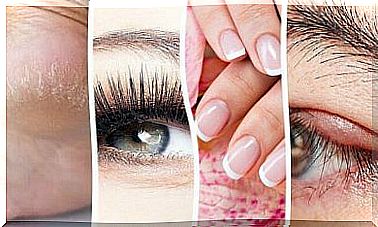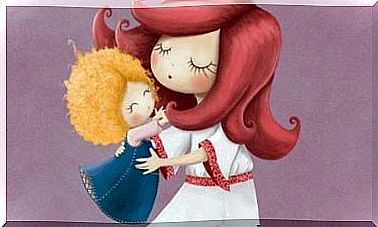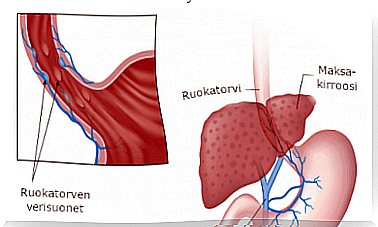How Is Fever Treated?
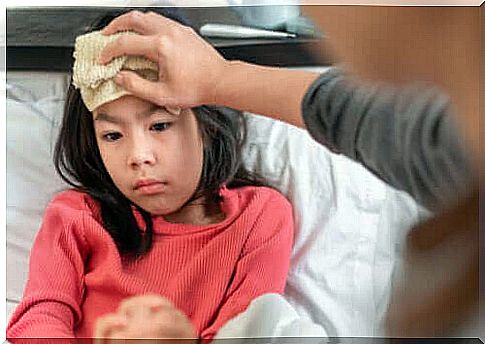
It is very important to treat the fever to avoid major complications. Fever is a rise in body temperature above the normal value, which should always average slightly below 37 degrees. One degree variation during the day is normal and does not necessarily indicate illness. In this article, we will tell you how to treat a fever.
Factors such as diet, exercise and weather conditions are some of the reasons why body temperature can rise. Body temperature above 38.5 degrees Celsius is considered fever.
What is a fever?
Fever is a sign that the body is responding well to a potential illness. However, care must be taken with it. Babies, especially infants, already have a very high body temperature of 38 degrees Celsius. In this case, efforts should be made to reduce the fever and the baby may need to be taken to hospital or at least to a pediatrician.
Fever is almost always associated with other symptoms:
- Constant ache all over the head, sometimes a feeling of compression
- Chills and sweating
- Muscle pain and tingling
- Dehydration, dry skin, decreased tears and urination
- Anorexia
- General weakness
Febrile seizures may also occur in children aged 6 months to 5 years. In these cases, it is recommended that the patient lie down to avoid injury during the seizure and contact a doctor immediately after the seizure.

Causes
The part of the body responsible for regulating body temperature is located in the brain and is called the hypothalamus. It works like a thermostat, but can raise the reference value for various reasons.
Fever can be caused by infectious agents such as viruses and bacteria. It can also be caused by inflammatory diseases such as rheumatoid arthritis and tumors, or as a side effect of medications. Vaccines of all kinds can also cause a fever.
How is fever treated?
For mild fever, your doctor is unlikely to prescribe any specific treatment, especially if no other symptoms occur. Low fever is actually a sign that the body is responding well to a virus or bacterium to fight it; Elevated body temperature can even help reduce disease-causing microbes in the body.
When the fever causes other harm or is high, it requires treatment. In this case, your doctor may prescribe over-the-counter medications such as ibuprofen or paracetamol. The drug should be taken only at the recommended doses; do not exceed the dose or use these medicines for a long time, as they may cause kidney or liver damage.
If these medicines do not reduce the fever, the cause of the fever must be determined in case antibiotics are needed to treat it. This can be, for example, a bacterial infection such as tonsillitis or pneumonia. In the case of a viral infection, antibiotics do not work.
For children, you should contact your pediatrician if the fever persists after the first dose. Children should not be given aspirin as it can lead to Reye’s syndrome, which – although rare – can be life-threatening.
How is fever treated? Other recommendations
For babies, and especially those under 28 days old, the best way to treat a fever is to take the child to the hospital. Newborns are susceptible to serious illnesses that require intravenous medication and special treatment.
You can try some home remedies to reduce your fever, as long as there are no other symptoms associated with the fever. In a dehydration, one must drink water and – even better – liquefying solutions orally. These not only hydrate the body, but also contain electrolytes, substances necessary for the normal functioning of the body.
In addition, rest as well as light clothing, low room temperature and sleeping without a blanket help in recovery. In addition, it is recommended to put lukewarm water baths on the forehead, armpits, groin and soles of the feet.
Lukewarm baths as well as garlic, basil, scented, ginger, thyme and chamomile stews, which are sweetened with a small amount of honey, also help reduce the fever. They should be drunk two to three times a day.

What to keep in mind
You should contact your doctor if the fever is 38 degrees Celsius in infants or 39 degrees Celsius in adults. This should be done for a greater reason if the fever is associated with headache, vomiting, irritability, abdominal pain, or rash, or if elevated body temperature does not take to count.
Treatment of fever should be done calmly but carefully – otherwise complications such as seizures and blurred consciousness may occur, which will only worsen the patient’s condition and may even endanger his or her life. For this reason, it is very important to see a doctor if the fever is high.
